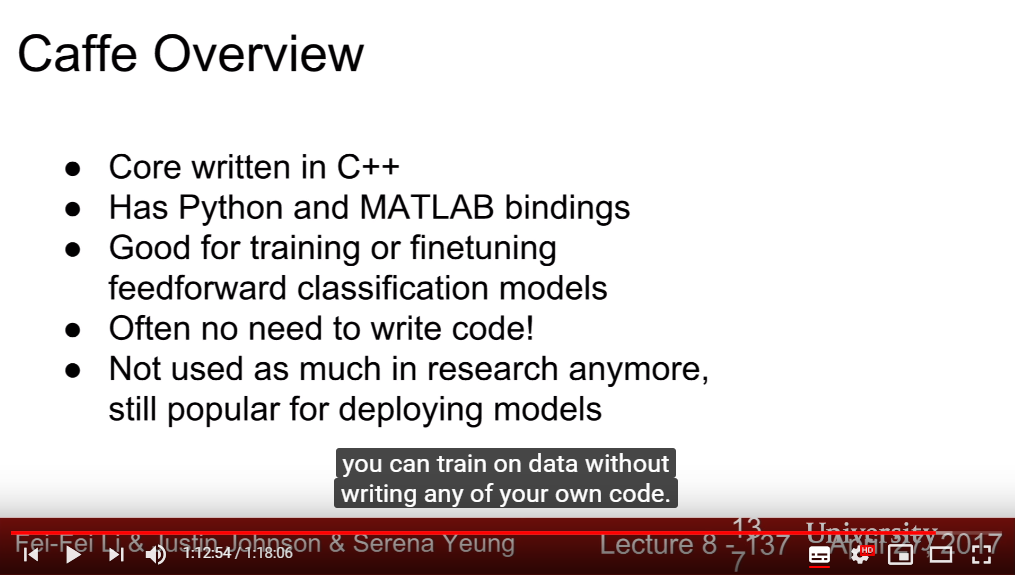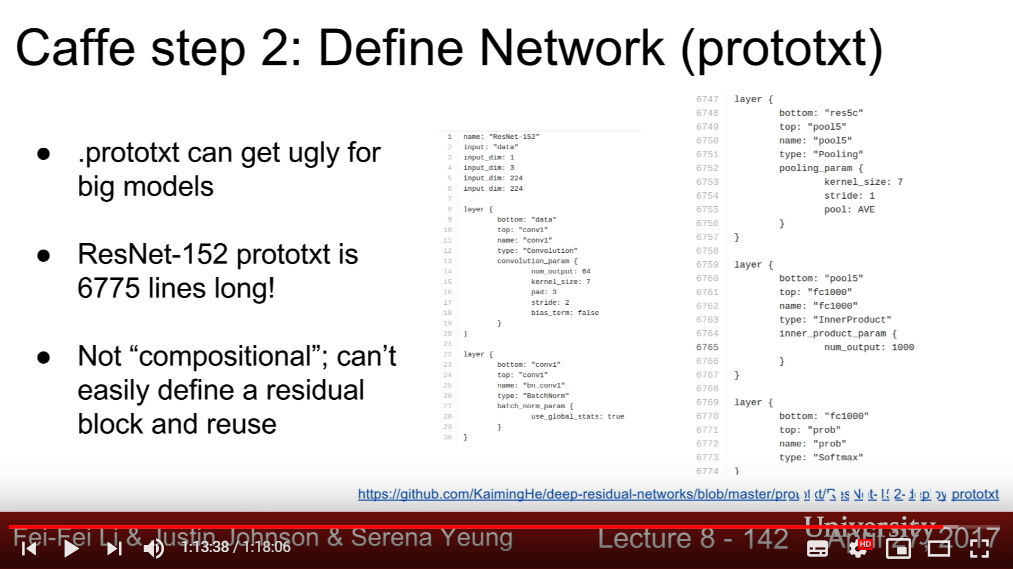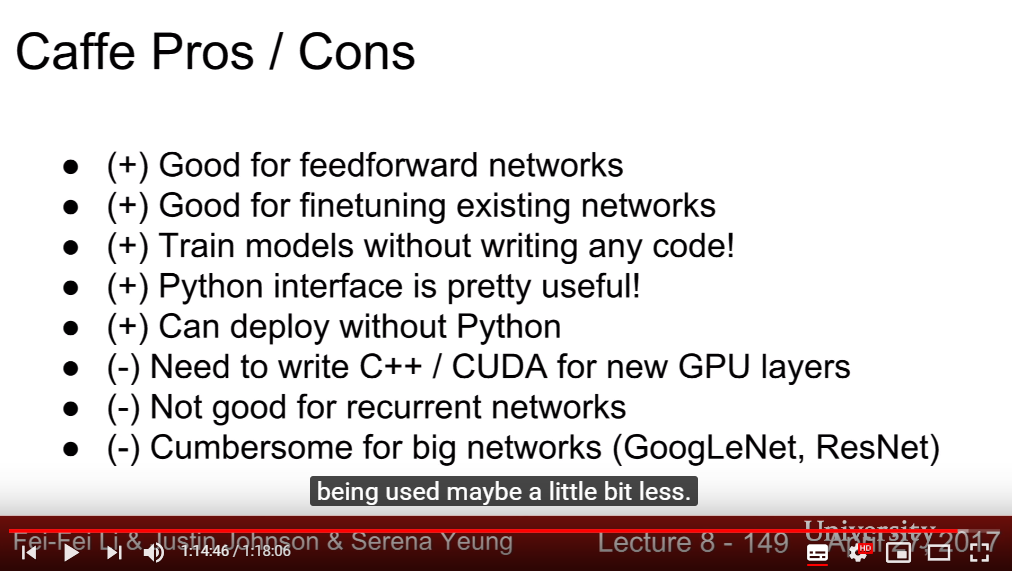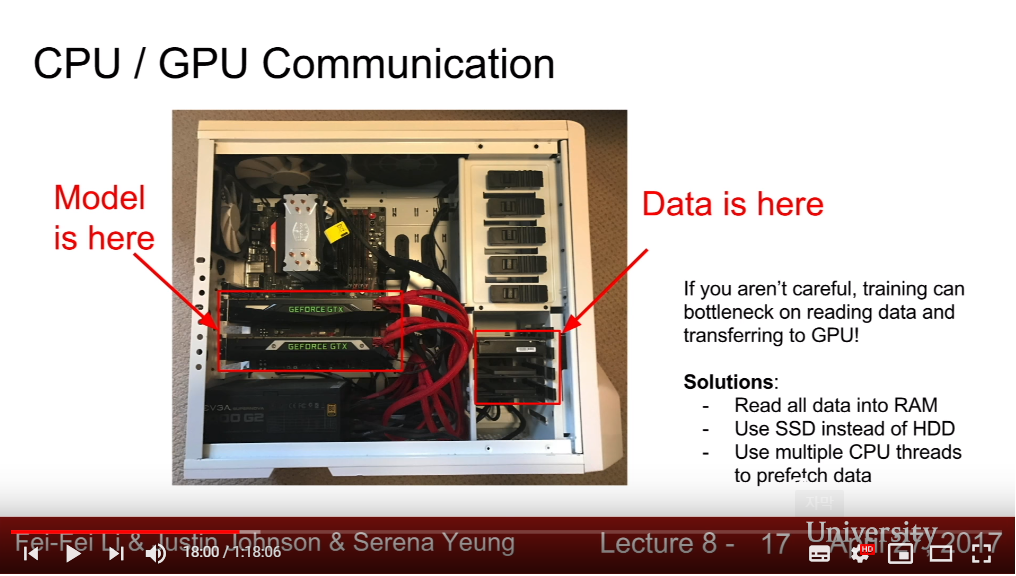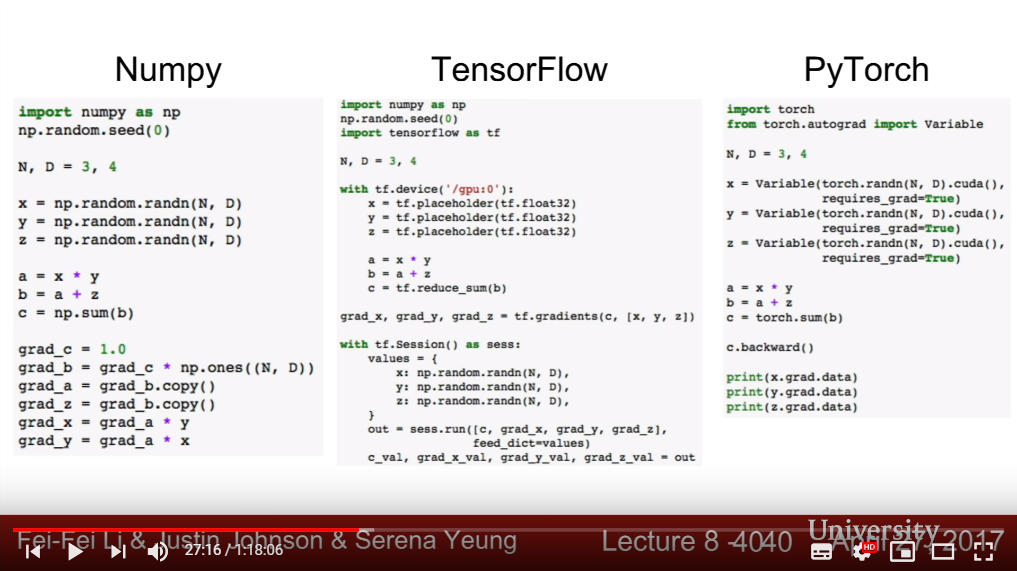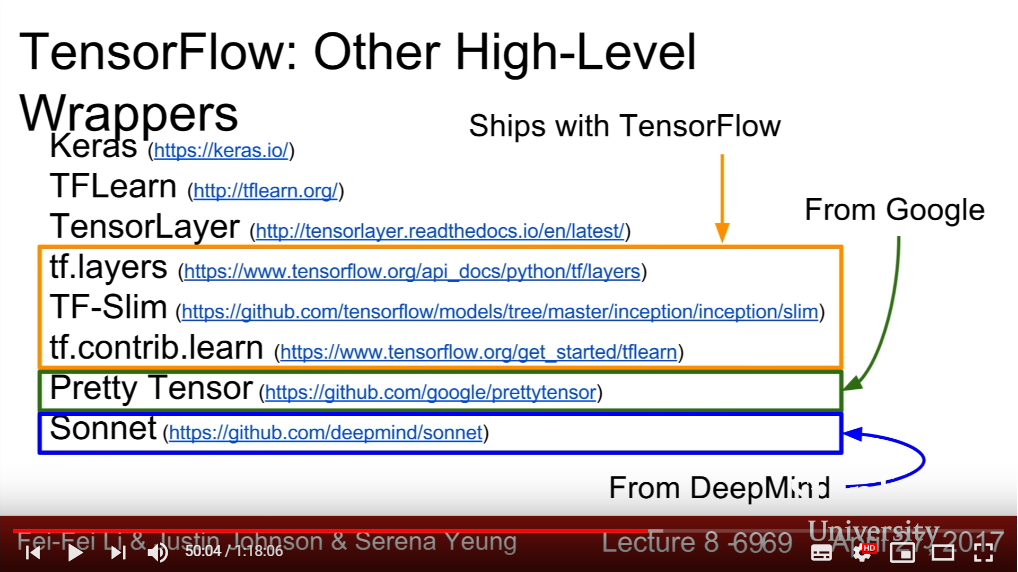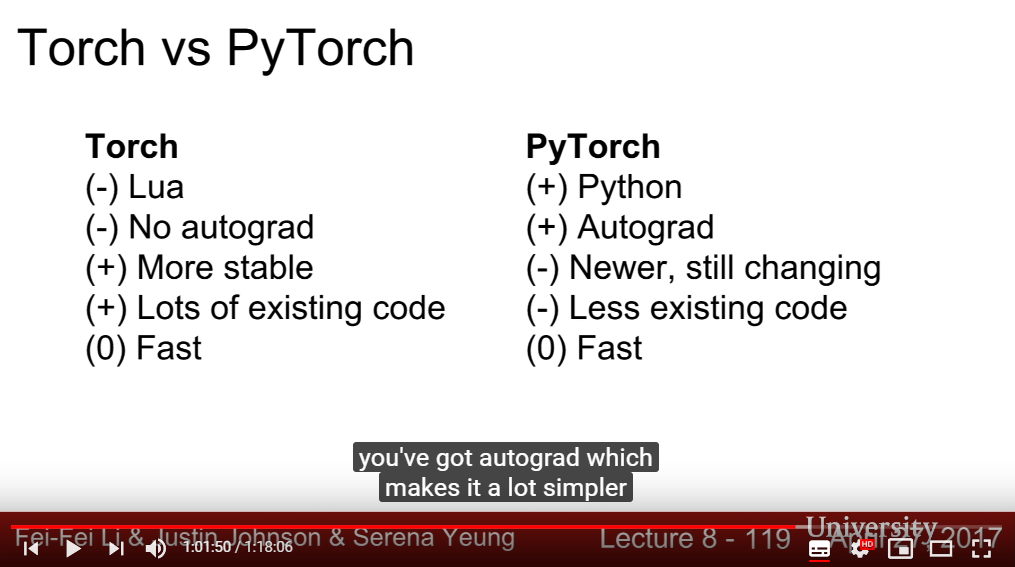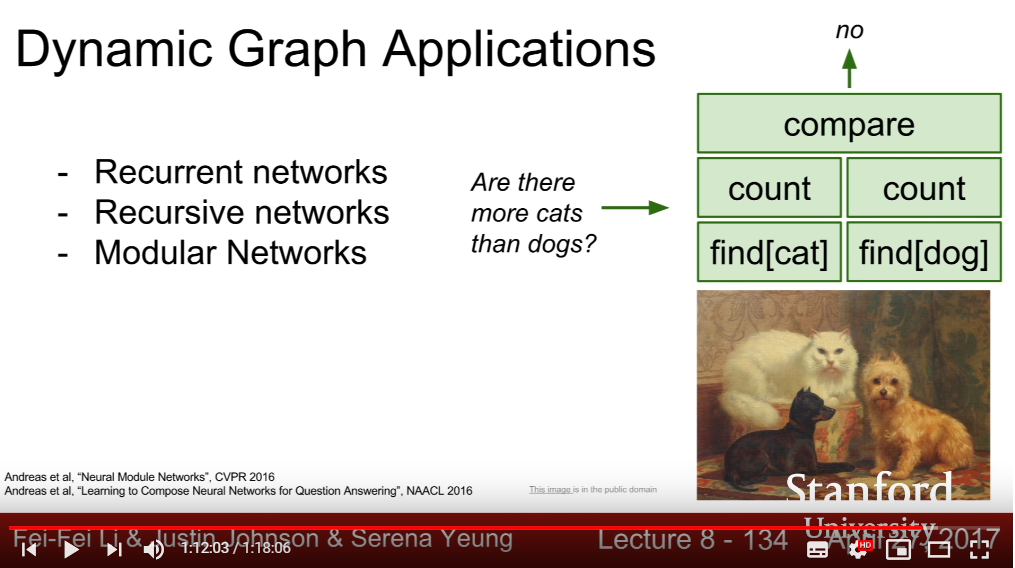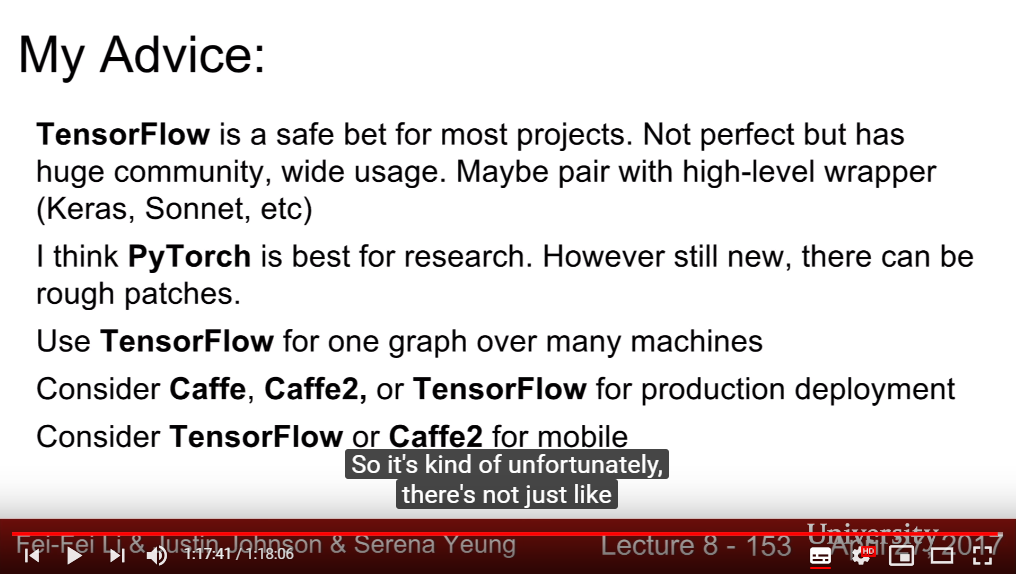Lecture 8 Deep Learning Software
Dl.cs231n.lecture| 23 Oct 2018
Tags:
DeepLearning
CS231n
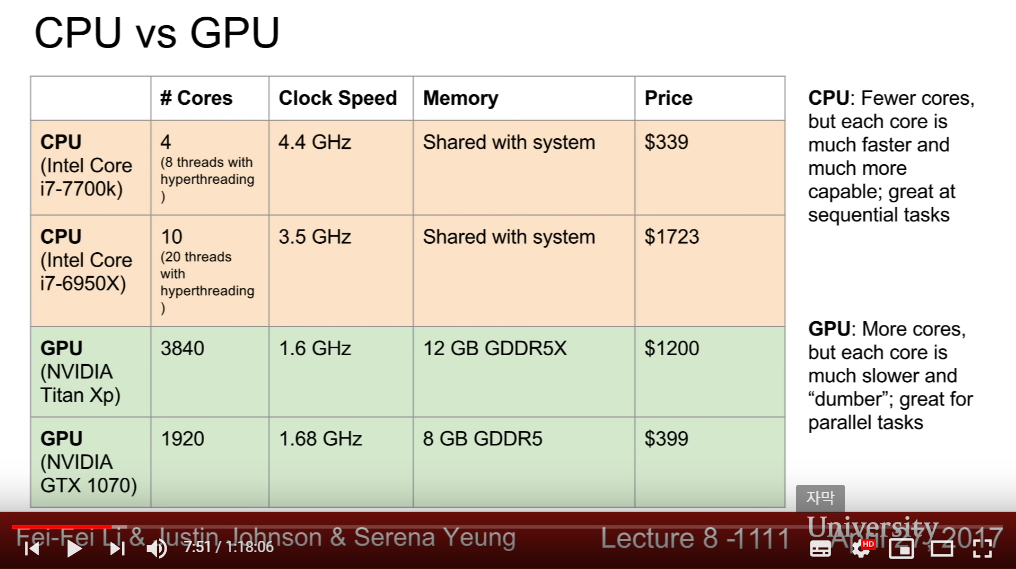
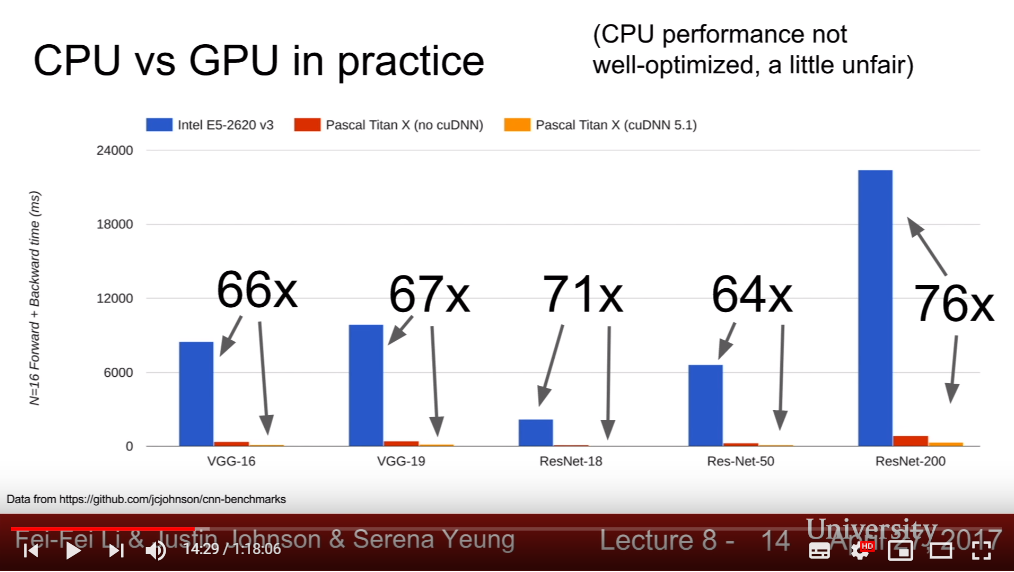

- GPU works much faster in massive parallel problems, because of its # of cores and straightforward structure(CPU matters more on capability and sequential task control)
- We could program GPUs by using CUDA(NVIDIA!)(and Higher level APIs cuBLAS, cuFFT, cuDNN), OpenCL(available in AMD, but slower than CUDA)
- There might be a bottleneck in reading data and transferring to GPU. Using RAM or SSD HD, using multiple CPU threads to IO could be a solution.
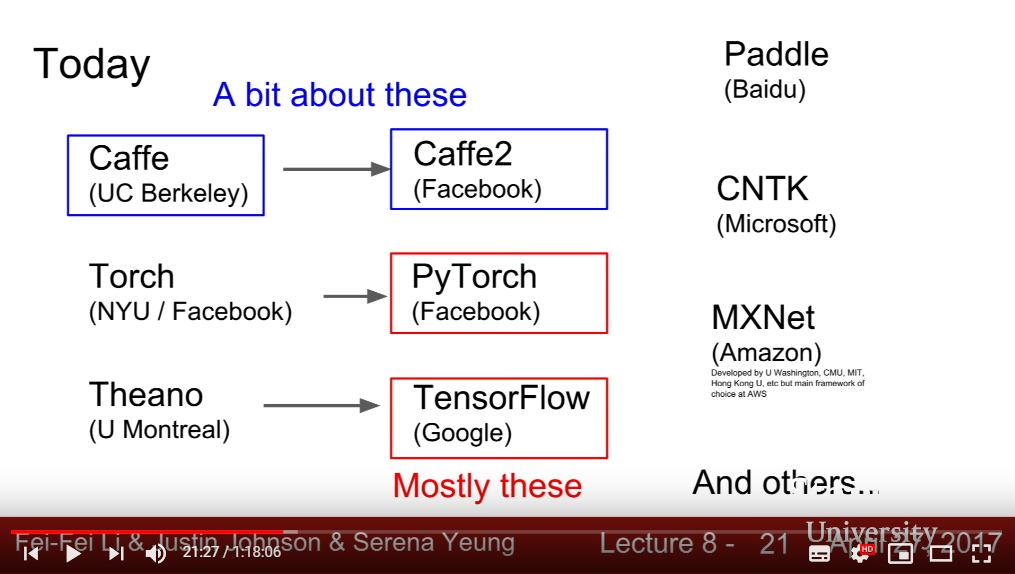
- Utilities of Deep Learning Libraries
- Easily build big computational graphs
- Easily compute gradients in computational graphs
- Run it efficiently on GPU(cuDNN, cuBLAS or etc)
- Goal of Deep Learning Libraries
- Compute as easy as Numpy(or others), and gives gradient function and GPU utilities without struggle.
- Trends of Deep Learning Libraries: the framework varies, TensorFlow is leading the trend, industries and big companies are supporting the libraries, which was made in academias.
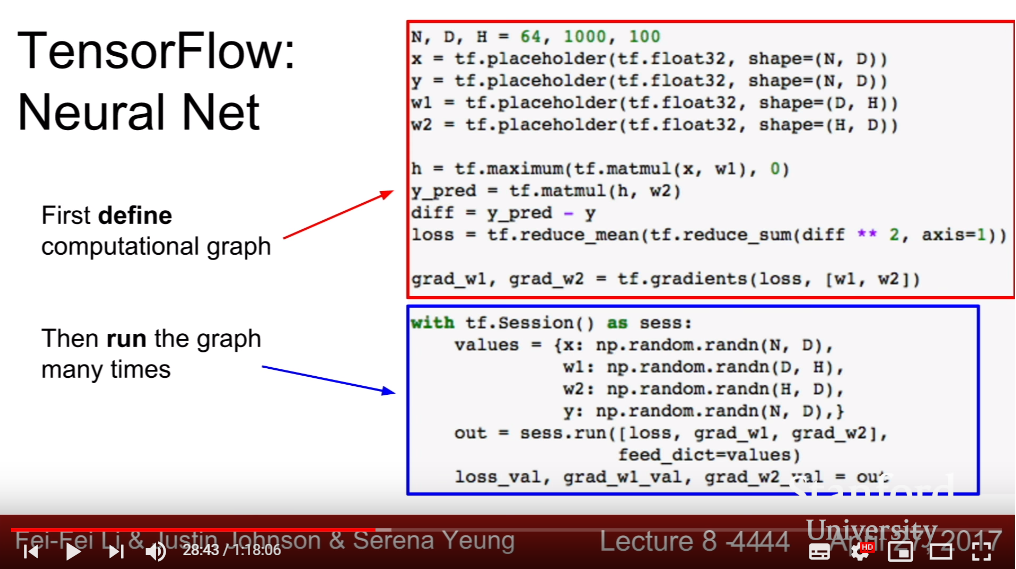
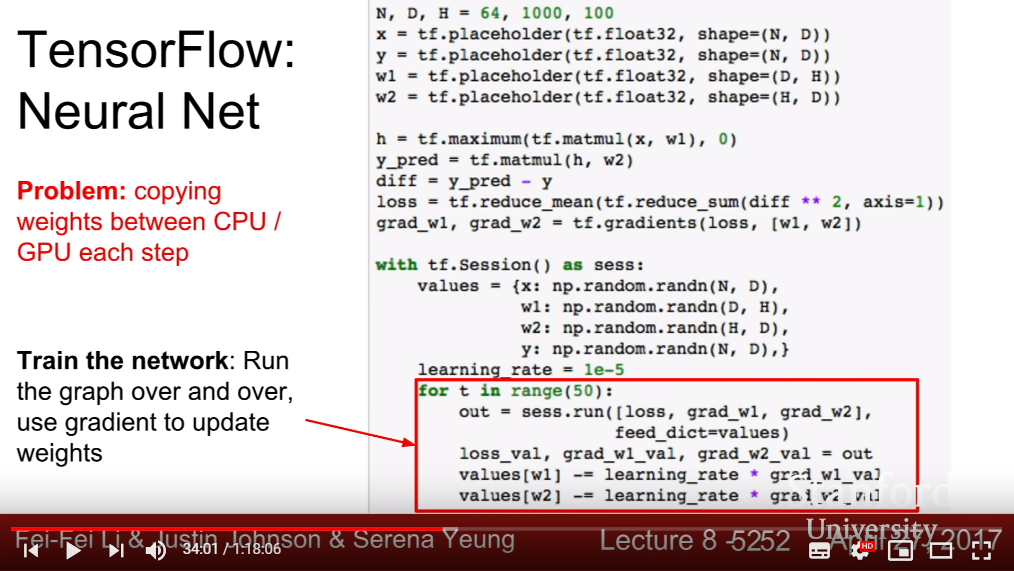
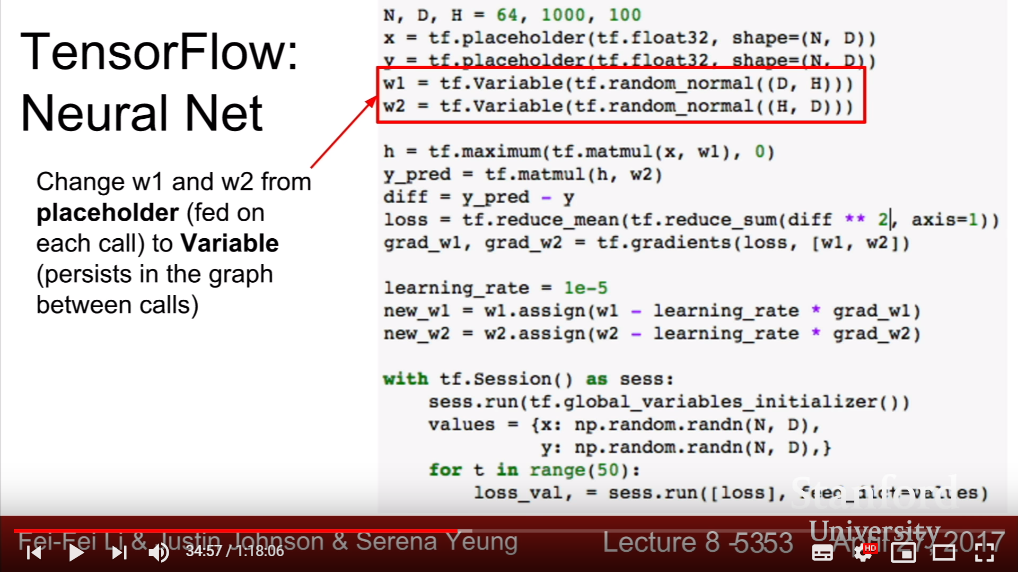
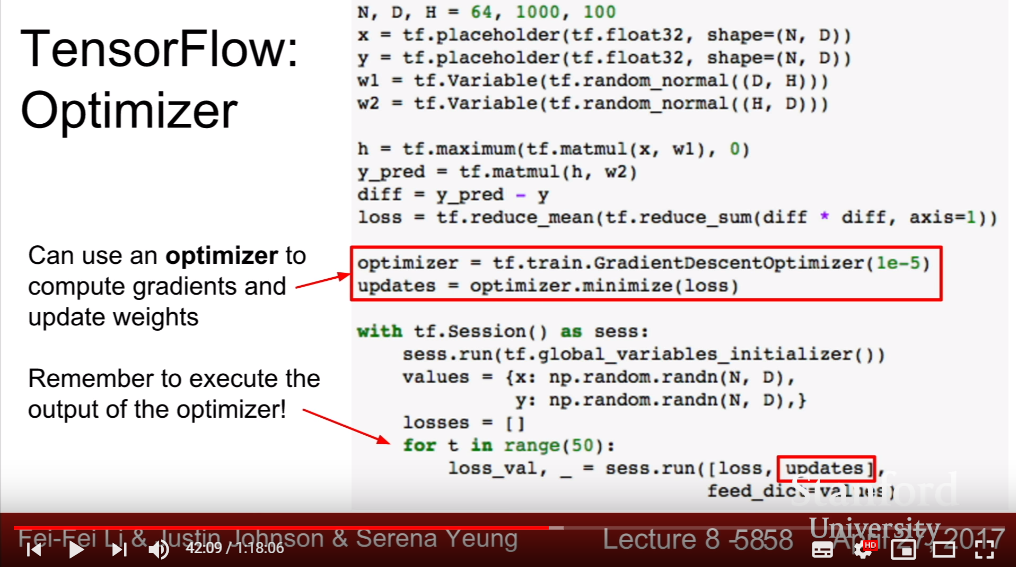
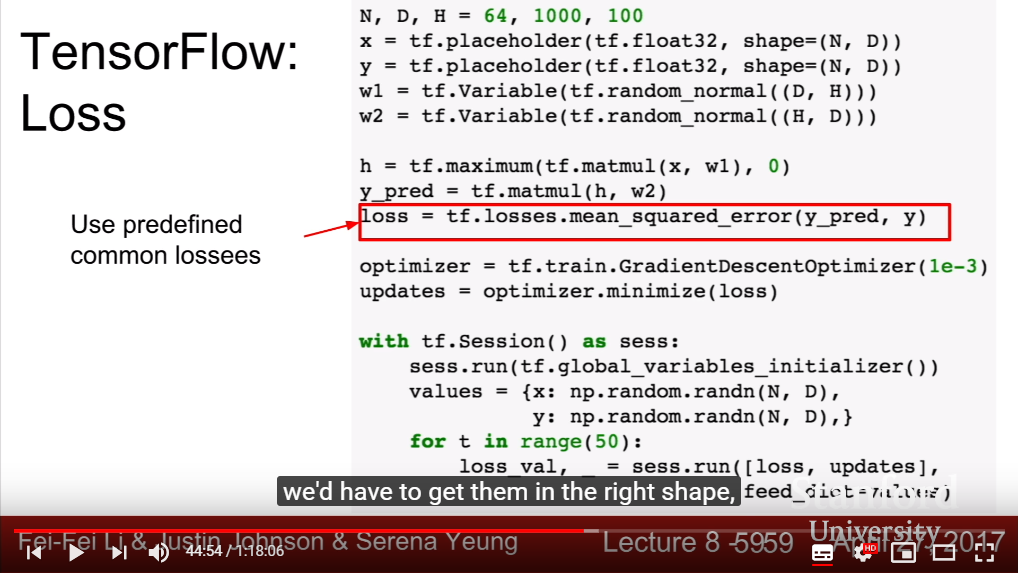
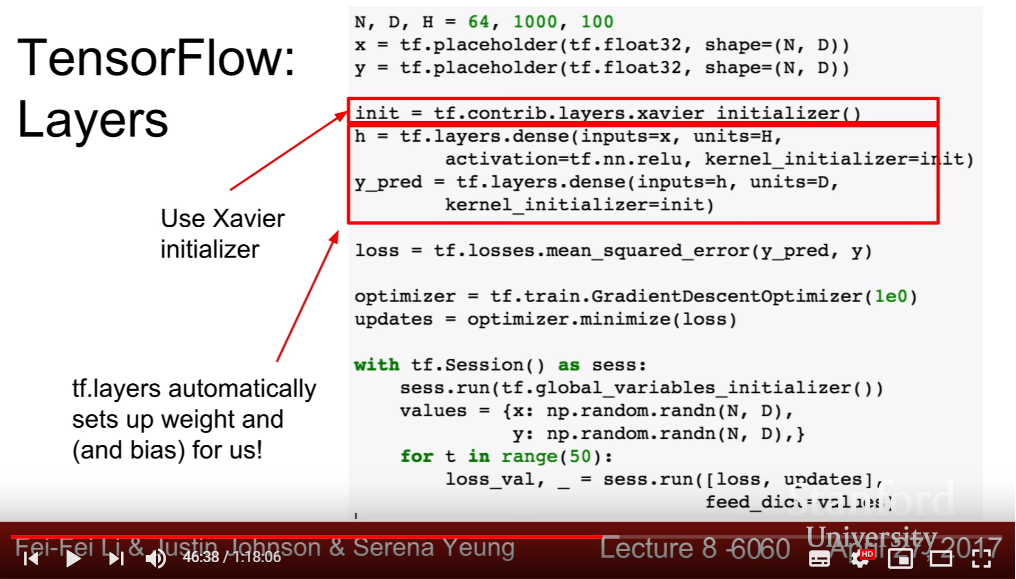
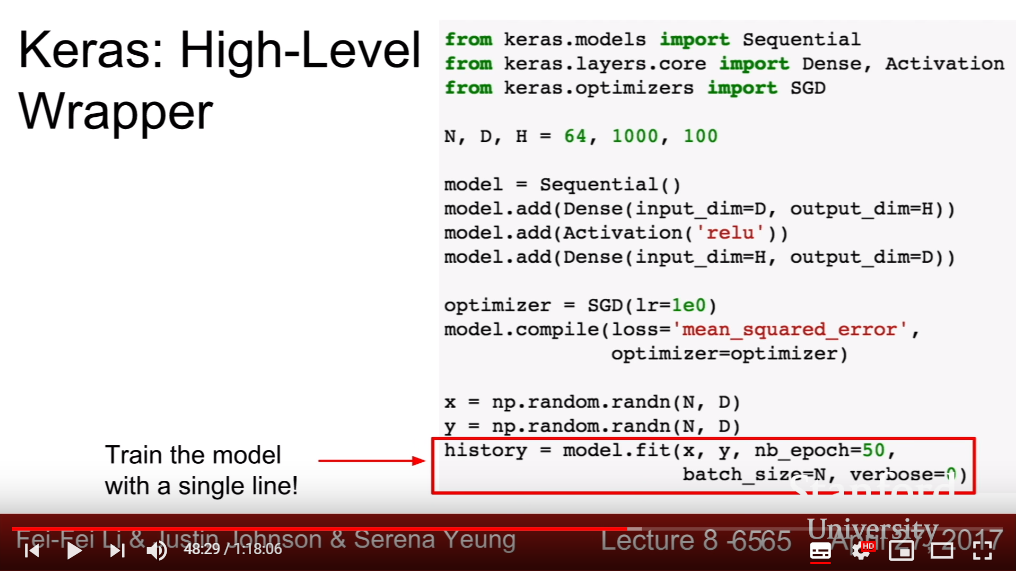
- Abstraction of Tensorflow
- APIS of Tensorflow
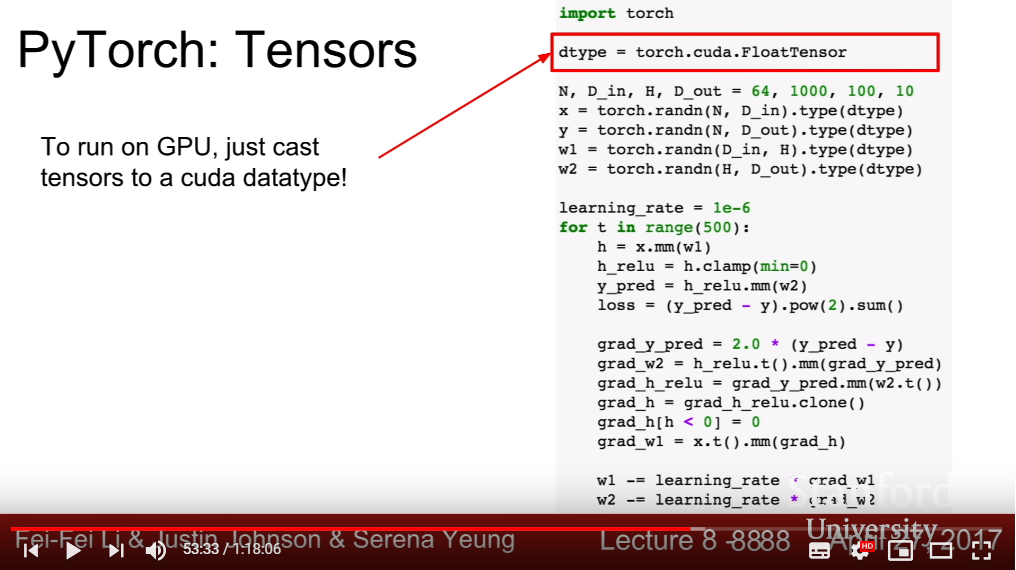
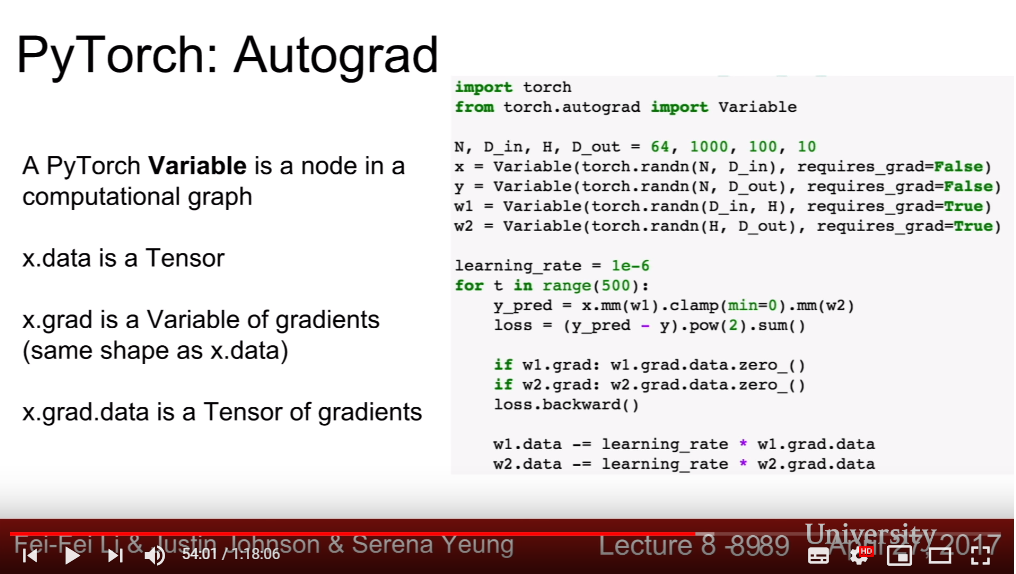
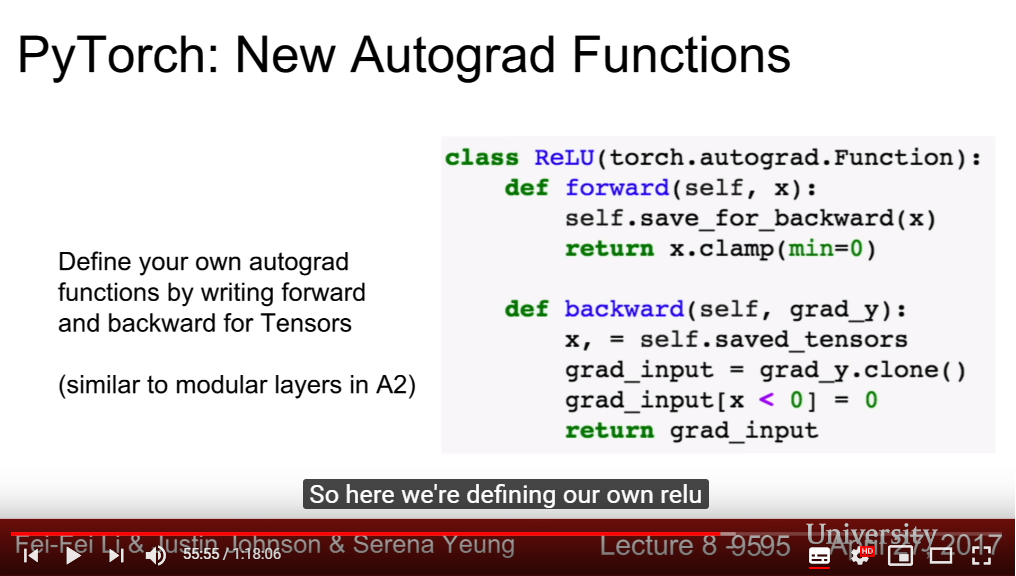
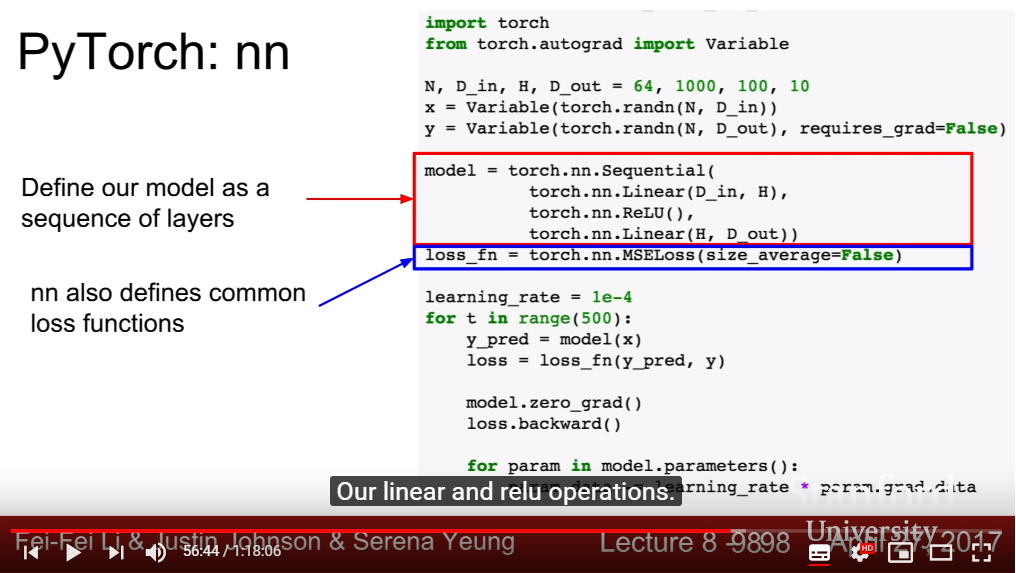
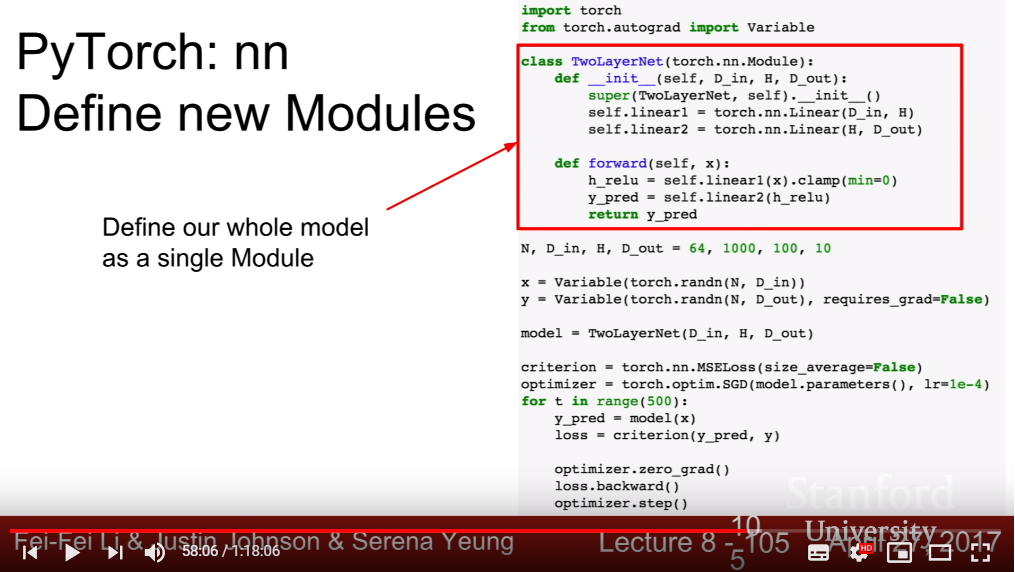
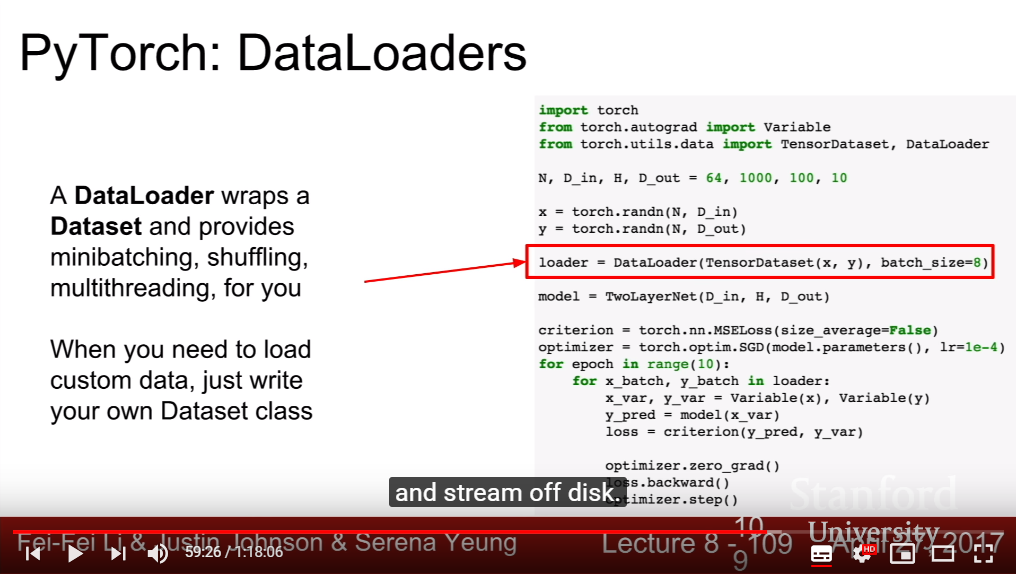
- Abstraction of PyTorch
- Tensor: Imperative array run-able on GPU
- Variable: Node that can store data and gradient
- PyTorch Tensors and Variables have the same API, so we just have to change Tensor to Variable
- Module: Neural network layer that can store state or weight
- APIs of Pytorch
- Pretrained Models: torchvision.models.model(pretrained=True)
- Visdom: logging the code and visualize the work(But, not visualize computational graph structure yet)
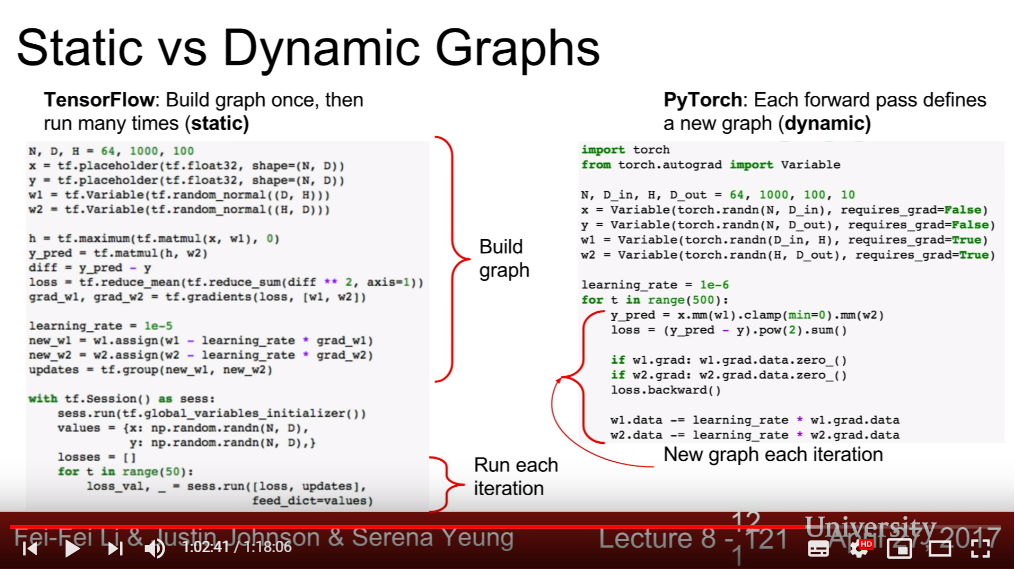
- Advantage of Static Structure
- Framework can optimize the graph before it runs(fuse operation, reordering,applying efficient method)
- Once graph is built, it can be serialized and do not have to rebuild the graph when re-using it(Otherwise, graph building and execution is interwined in dynamic structure)
- Advantage of Dynamic Structure
- Code is a lot cleaner and easier in most of scenarios:conditional situation, loops, else(Tensorflow must build its own entire control-flow methods(magic lines) to support all computational graphs)(There are library TensorFlow Fold that makes dynamic graphs easier in TF, using dynamic batch)
- Available in building Recurrent networks, Recursive network, Modular networks
- Google is tring to unify all frameworks as TensorFlow, whereas Facebook is varying Static Structure Framework(Caffe) and Dynamic Structure Framework(PyTorch).
